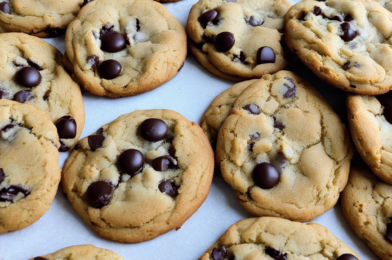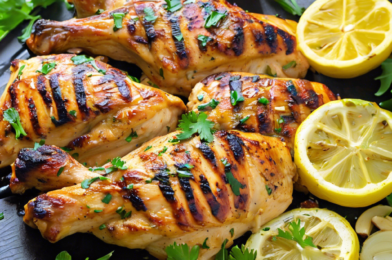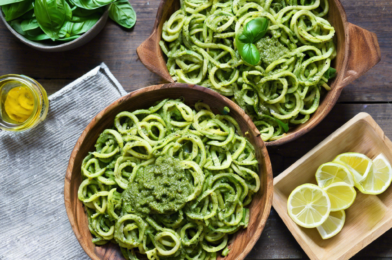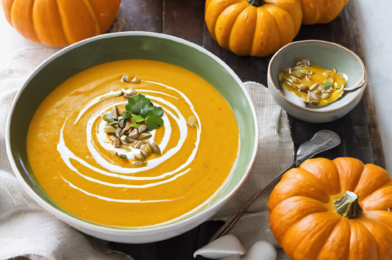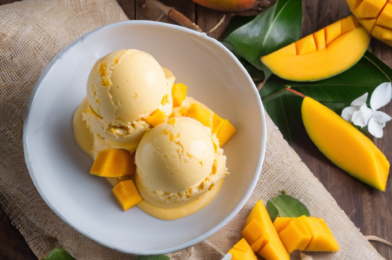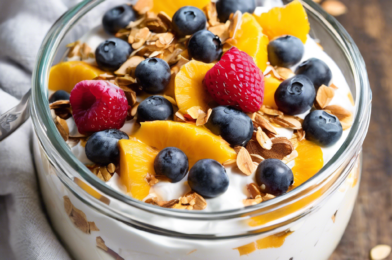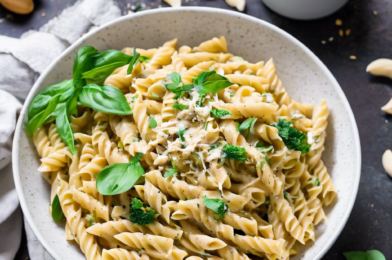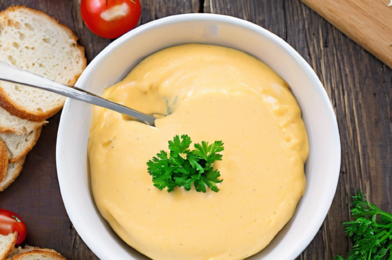When it comes to baking, few treats are as universally cherished as the classic chocolate chip cookie. However, for those who are lactose intolerant or choose to avoid dairy for other reasons, finding a satisfying alternative can be a challenge. Enter the dairy-free chocolate chip cookie, a delicious twist on the beloved classic that doesn’t compromise on taste or texture. For anyone who’s ever had to forgo these sweet delights due to dietary restrictions, this recipe is a game-changer. When I first baked a batch of these cookies for my family, I was met with rave reviews. The cookies were devoured in minutes, and even the staunchest dairy lovers in the house couldn’t tell the difference. The rich flavor and soft, chewy texture won everyone over, proving that going dairy-free doesn’t mean sacrificing indulgence.
Ingredients
Creating the perfect dairy-free chocolate chip cookie begins with selecting the right ingredients. These cookies rely on a blend of traditional elements and innovative substitutes to achieve their classic taste and texture. Here’s what you’ll need:
- 1 cup coconut oil: This serves as a rich and flavorful substitute for butter, lending the cookies a subtle tropical taste that complements the chocolate perfectly.
- 1 cup packed brown sugar: The molasses in brown sugar adds moisture and a deeper flavor profile.
- 1/2 cup granulated sugar: This helps balance the sweetness and provides a slight crispness to the edges of the cookies.
- 2 teaspoons vanilla extract: Essential for enhancing the overall flavor.
- 2 large eggs: The binding agent that holds everything together.
- 2 1/4 cups all-purpose flour: The foundation of any good cookie.
- 1 teaspoon baking soda: Helps the cookies rise just the right amount.
- 1/2 teaspoon salt: Balances the sweetness and enhances the chocolate flavor.
- 2 cups dairy-free chocolate chips: The star of the show, ensuring each bite is filled with chocolatey goodness.
Instructions
Transforming these ingredients into mouthwatering cookies is straightforward and rewarding. Follow these steps to ensure perfect results:
-
Preheat your oven to 350°F (175°C) and line two baking sheets with parchment paper.
-
In a large mixing bowl, combine the coconut oil, brown sugar, and granulated sugar. Beat together until the mixture is smooth and creamy.
-
Add the vanilla extract and eggs to the mixture, beating well after each addition until the ingredients are fully incorporated.
-
In a separate bowl, whisk together the flour, baking soda, and salt. Gradually add the dry ingredients to the wet mixture, stirring until just combined.
-
Fold in the dairy-free chocolate chips, ensuring they are evenly distributed throughout the dough.
-
Drop spoonfuls of dough onto the prepared baking sheets, spacing them about 2 inches apart to allow for spreading.
-
Bake for 10-12 minutes, or until the edges are golden brown and the centers are set. Allow the cookies to cool on the baking sheets for a few minutes before transferring them to a wire rack to cool completely.
Nutrition Facts
This recipe yields approximately 24 cookies, each serving packed with flavor and satisfaction. For those mindful of their caloric intake, each cookie contains around 150 calories. While these cookies are a treat, they don’t skimp on the delightful experience we all seek in a sweet indulgence.
Preparation Time
Baking these cookies is a relatively quick process, perfect for those who crave instant gratification. The total time from start to finish is about 30 minutes, with 10-12 minutes for baking and the remaining time dedicated to preparation. This makes them an ideal choice for last-minute gatherings or when a sudden craving strikes.
How to Serve
Serving these dairy-free chocolate chip cookies can be as creative or as straightforward as you desire. Here are a few suggestions to enhance your cookie experience:
- Classic with a Twist: Enjoy warm cookies fresh from the oven with a cold glass of almond or oat milk.
- Ice Cream Sandwiches: Pair these cookies with your favorite dairy-free ice cream for a delightful dessert.
- Cookie Crumble: Crumble the cookies over a bowl of dairy-free yogurt or smoothie bowl for added texture and flavor.
- Cookie Stack: Stack them up with layers of dairy-free whipped cream for an impressive treat at parties.
- Gift Box: Package them in a decorative box to share as a thoughtful homemade gift.
Additional Tips
To ensure your dairy-free chocolate chip cookies are nothing short of perfection, consider these additional tips:
- Room Temperature Ingredients: Ensure the coconut oil and eggs are at room temperature for easier mixing and better consistency.
- Chill the Dough: Refrigerate the cookie dough for at least 30 minutes if you prefer thicker cookies that don’t spread as much.
- Experiment with Mix-Ins: Customize your cookies by adding nuts, dried fruits, or even a dash of cinnamon for a unique twist.
- Store Properly: Keep the cookies in an airtight container at room temperature to maintain their freshness for up to a week.
- Freezing for Later: To enjoy fresh cookies anytime, freeze the cookie dough balls on a baking sheet, then transfer them to a freezer bag. Bake from frozen, adding a couple of extra minutes to the baking time.
FAQ Section
Here are some frequently asked questions about dairy-free chocolate chip cookies:
- Can I substitute another oil for coconut oil?
Yes, you can use other vegetable oils like canola or avocado oil, though the flavor and texture might vary slightly. Coconut oil is recommended for its flavor and consistency.
- What can I use instead of eggs?
If you are also avoiding eggs, you can use flaxseed meal as an egg replacement. Mix one tablespoon of flaxseed meal with three tablespoons of water for each egg and let it sit for a few minutes to thicken.
- Are these cookies vegan?
Yes, as long as you use a vegan egg substitute, these cookies can be considered vegan.
- Can I make these cookies gluten-free?
You can try using a gluten-free flour blend in place of all-purpose flour. Make sure to select a blend that is suitable for baking to ensure the best texture.
- How do I prevent the cookies from spreading too much?
Chilling the dough before baking and ensuring your baking sheets are cool can help prevent the cookies from spreading too much in the oven.
